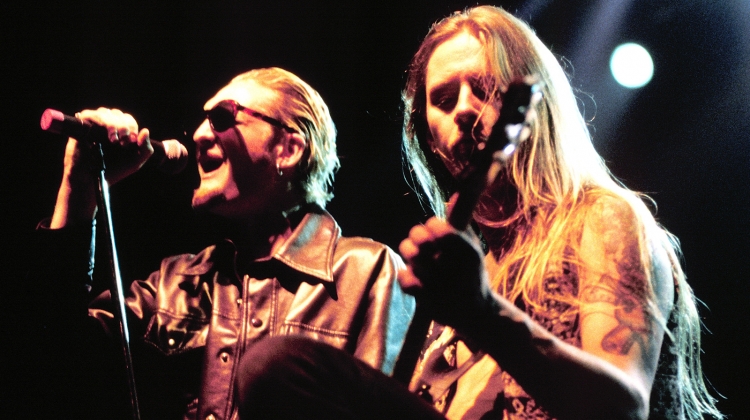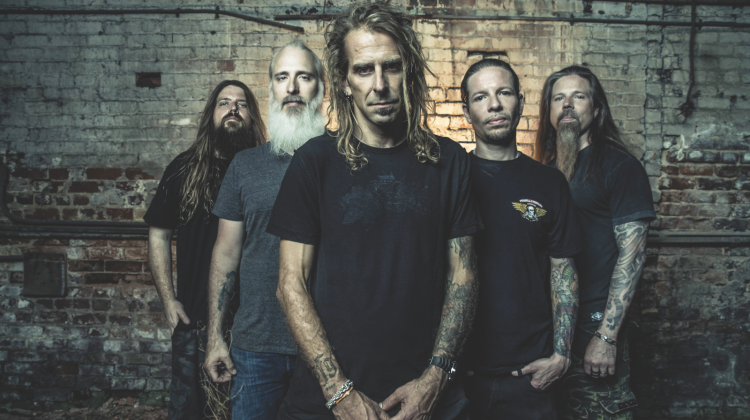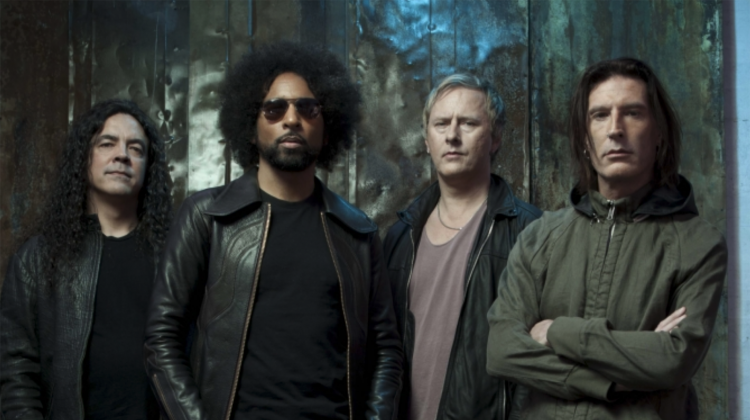In retrospect, it's safe to say that the world was not ready for Appetite for Destruction.
There was nothing quite like it on the radio or the charts on July 21st, 1987, the day Guns N' Roses' game-changing debut album first hit the streets. Sure, Whitesnake, Poison, Bon Jovi and Mötley Crüe were all firmly ensconced in the Top 10 at the time, but only the slick Sunset Strip sleaze of the Crüe's Girls, Girls, Girls came close to the feral sound and street-smart attitude of Appetite, and its unabashed celebration of sex, drugs, booze and rock & roll.
In time, Appetite would sell over 30 million copies worldwide, making it one of the top-selling records ever (as well as the best-selling debut of all time), and everyone would claim to have always loved it. But that wasn't the actual case in the summer of 1987: Several publications gave it lukewarm-at-best reviews at the time, and the album didn't even manage to stagger into the Billboard 200 until a month after its release, when it landed at No. 182. From there, Appetite began a slow and steady climb to No. 1, its popularity gradually building as rock and metal fans began to hop aboard the GN'R train, enticed by the band's dangerous aura and utterly killer tunes. The album would finally reach Billboard's top spot nearly a year later, during the first week of August 1988, return to the position for three more weeks that fall, and remain in the Top 10 through the week of April 15th, 1989.
By then, the ripples of Appetite's influence had already been deeply felt around the globe, and nothing would ever be quite the same again. Here are 10 ways the album changed the musical landscape.
1. Gibson Guitars Became Cool Again
For much of the Eighties, metal and hard-rock guitarists had largely favored angular, eye-catching instruments produced by companies like B.C. Rich, Ibanez, Charvel and Jackson — bright colors, wild body shapes and pointy headstocks abounded, as did hot-rodded "superstrats" built for maximum shred and distortion. But the guitars on Appetite for Destruction sounded fatter, sleazier and yet far less distorted than anything in the metal world at the time, thanks to Slash and Izzy Stradlin's preference for playing Gibsons. Suddenly, headbangers everywhere began to strap on Gibsons of their own. Hell, Slash's soulful solo on "Sweet Child O' Mine" alone probably did more to help re-popularize the Les Paul than any amount of marketing dollars could have achieved at the time.
2. The "Hair Metal" Look Became Considerably Less Cool
While GN'R brought Gibsons back, they also helped to usher out the "dude looks like a lady" aesthetic that dominated the mid/late Eighties metal scene. Sure, Axl Rose rocked a teased n' sprayed 'do (and maybe even a little bit of lipstick and eyeliner) in the "Welcome to the Jungle" video, but the rest of the band looked like they'd spent the night before the shoot sleeping on the floor of their local dive bar. Though it would take a few more years for Maybelline to be fully banished from the scene, GN'R's popularity caused all but the most dedicated purveyors of hair metal to seriously reconsider their pretty-boy ways. By the fall of 1988, even Poison had traded in their makeup kits for bandanas and three-day stubble.
3. It Unleashed a New Wave of Stones-Influenced Bands
The lineup of Appetite-era Guns N' Roses utilized a musical attack similar to that established and perfected during the Sixties by the Rolling Stones: blues-based music played by an unflashy yet hard-swinging rhythm section, a rock-solid rhythm guitarist, a flashy-but-soulful lead player and a charismatic vocalist who exuded danger and decadence. Though the same format had been subsequently followed by countless other bands (Aerosmith being the most successful), GN'R put a fresh enough spin on it that plenty of established bands were inspired to dust off their copies of Sticky Fingers and Exile on Main Street (like Cinderella, who took a noticeably Stones-y turn following the release of Appetite), and A&R guys everywhere started signing up acts with a similarly classic approach and vibe. Without Appetite paving the way, the Black Crowes might never have landed a record deal, or at least found as big of an audience for their 1990 debut, Shake Your Money Maker.
4. "Sweet Child O' Mine" Gave New Life to the Power Ballad
By the late Eighties, the power ballad had already become something of a joke. After all, no commercially-minded metal album was truly complete without a power ballad — something light, sweet and sappy, specifically designed to appeal to "the ladies" and/or inspire an entire arena full of fans to raise their lighters. But with "Sweet Child O' Mine," Guns N' Roses reminded the rock world that you could write a love song straight from the bruised heart beating beneath the tattoos, and still kick some serious ass in the process.
5. The Album Kicked Mötley Crüe in the Ass
For a large chunk of the Eighties, Mötley Crüe were the unchallenged bad-boy kings of the Hollywood scene. But when the fire and fury of Appetite for Destruction made their 1987 album Girls, Girls, Girls sound old and lame by comparison, the Crüe were forced to fight to reclaim their crown. They came out swinging on their next album — and it's no coincidence that 1989's Dr. Feelgood would be the toughest, heaviest record the Crüe ever concocted.
6. It Raised the Bar for Track-by-Track Album Quality
While the Eighties produced no shortage of brilliant thrash-metal albums, it was difficult to find new albums from contemporary hard-rock and hair-metal bands where the "deep cuts" were anywhere as good as the hits. But Appetite for Destruction's road-tested track list was impressive all the way through. Sure, "Welcome to the Jungle," "Sweet Child O' Mine" and "Paradise City" were all well-deserved hits, but there were quite a few GN'R fans who loved "It's So Easy," "Nightrain," "You're Crazy," "Mr. Brownstone," "My Michelle" and "Rocket Queen" even more. Appetite's message was clear to rockers everywhere: Audiences deserved better than an album with a couple of hits and a ton of filler tracks.
7. It Turned Axl Rose into the Hottest Guest Vocalist in Rock
Rose's high-powered yowl was everywhere in the late Eighties, and not just because Appetite's songs were getting constant airplay. Thanks to the album's success — and his own mercurial, bad-boy image — Rose suddenly became an in-demand guest vocalist for established rockers who wanted to add a fresh dose of coolness or credibility to their recordings or performances. In 1988, Axl, Izzy and Slash all guested on Alice Cooper's re-recording of "Under My Wheels" for the soundtrack of Penelope Spheeris' The Decline of Western Civilization Part II: The Metal Years. The following year, Rose lent his distinctive pipes to tracks by Don Henley ("I Will Not Go Quietly"), former Sex Pistols guitarist Steve Jones ("I Did U No Wrong") and former Hanoi Rocks frontman Michael Monroe ("Dead, Jail or Rock N' Roll"), while also guesting on Tom Petty's performance of "Free Fallin'" at the MTV Video Music Awards, and tour mates the Rolling Stones performance of "Salt of the Earth" for their Steel Wheels tour pay-per-view special.
8. It Helped Expose GN'R Fans to Some Really Cool Bands
Though they occasionally bristled at press comparisons to other bands, the members of Guns N' Roses weren't shy about giving props to their forebears. Though all of the songs on Appetite were originals, the album's success sent GN'R fans searching frantically for their earlier EP Live ?!*@ Like a Suicide, which included a cover of "Nice Boys," a song by Australian rock legends Rose Tattoo, who were all but unknown in the States. The band also spoke at length in interviews about their influences, which ranged from punk bands like the Sex Pistols and Misfits to glam rockers New York Dolls and Hanoi Rocks. Slash even admitted that his famous top hat was an homage to the late Marc Bolan of T. Rex. As a result, many GN'R fans sought out records by these artists, most of whom were still quite underappreciated at the time.
9. Appetite Exposed the Art of Robert Williams to a Wider Audience
Legend has it that Axl found a postcard of Robert Williams' 1978 painting Appetite for Destruction, and jokingly presented it as a potential cover for the album, only for the rest of the band to go, "This is it!" Knowing the painting's lurid, sexually violent image would cause a stir, the band's manager Alan Niven arranged for the first 30,000 vinyl copies of Appetite to feature Williams' painting on the cover, while all subsequent copies would move the image to the inner sleeve, and replace it on the cover with Billy White Jr.'s image of a Celtic cross festooned with cartoon skulls that looked like the individual band members. The controversial original cover quickly vanished from the stores, making it an instant collector's item, but it also exposed Williams' brilliant, eye-popping "lowbrow" art to a much wider audience beyond the avant-garde art circles in which he traveled.
10. It Paved the Way For Nirvana
It is an oft-repeated, widely-accepted claim that Nirvana and the Seattle grunge scene wiped out hair-metal bands like climate change wiped out the dinosaurs. But in reality, Appetite for Destruction actually did most of the advance demolition work, as far as the hair-metal scene was concerned. The album's roots-oriented hard rock and gritty, reality-based lyrics made the hairspray-and-spandex crowd sound shallow and silly by comparison. Its rebellious rage felt honest, instead of just another attention-grabbing pose. Once rock audiences realized that they wanted more of that kind of thing in their lives and on their stereos, hair metal's days were essentially numbered — and their ears were primed for more raw, real and rebellious hard rock, which would soon arrive in the form of grunge.











